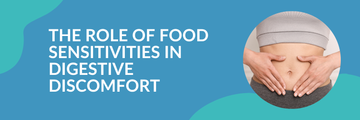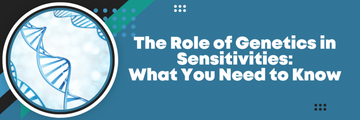By Dr Joseph Nightingale, MBBS, MSc – Advisory Board, Sensitivity Check
Meet Dr Nightingale: https://www.sensitivitycheckireland.com/pages/authors/joseph-nightingale
Feeling bloated? Constantly tired? Suffering from skin issues or stomach cramps, but no idea what’s causing them?
That’s where an elimination diet comes in.
It’s one of the most powerful tools for identifying food intolerances. Unlike allergy tests, which look for an immediate immune response, elimination diets focus on delayed, often overlooked symptoms that build up over time. These symptoms are subtle. Fatigue, headaches, joint pain, or even eczema, all of which can be linked to what you’re eating.
But how exactly does an elimination diet work? What’s the science behind it? And is it something you can do yourself, or is testing a smarter first step?
Let’s break it down.
What is an Elimination Diet?
An elimination diet is a short-term eating plan designed to identify food intolerances or sensitivities. You temporarily remove common trigger foods from your diet, wait for symptoms to settle, and then reintroduce them one by one to see which ones are causing issues.
It’s not about weight loss. It’s not about “clean eating.” It’s about pinpointing foods your body doesn’t tolerate well, even if you’ve eaten them for years.
How Does It Work?
There are two key phases: elimination and reintroduction.
Elimination Phase
This is where you cut out the most common triggers. These include:
- Gluten
- Dairy
- Soy
- Eggs
- Corn
- Nuts
- Nightshades (like tomatoes and peppers)
- Caffeine
- Alcohol
You’ll need to be strict. Even small exposures can affect your results. During this time, many people notice their symptoms begin to improve. You may feel clearer-headed, less bloated, and more energised.
Reintroduction Phase
Once you’ve had a few symptom-free weeks, it’s time to test each food group. You’ll reintroduce one category at a time (usually over a 3-day window) and monitor for any symptoms. If your symptoms return, you’ve likely identified a trigger.
It’s crucial to only reintroduce one food at a time. Otherwise, it becomes impossible to know what’s behind a flare-up.
What are the Benefits of an Elimination Diet?
For anyone struggling with vague, unexplained health issues, elimination diets can be life-changing. When done properly, they give you a clearer picture of how your body responds to different foods and help you make informed decisions about what to eat (and what to avoid).
Here’s what you might notice:
- Improved digestion – Less bloating, fewer stomach cramps, and more regular bowel movements.
- Stable energy levels – No more crashing mid-afternoon or relying on caffeine to stay alert.
- Clearer skin – Particularly helpful for those with acne, eczema, or unexplained rashes.
- Better mood and mental clarity – Many people report reduced brain fog, anxiety, or irritability.
- Fewer headaches or migraines – Especially when common triggers like caffeine, gluten, or additives are involved.
- Less joint or muscle pain – Chronic inflammation can often be linked to food sensitivities.
- Improved sleep quality – Especially when digestive discomfort or restlessness was interfering.
But beyond the physical improvements, elimination diets give you back a sense of control. You stop guessing. You start listening to your body. And you learn how to nourish yourself in a way that supports your health, not disrupts it.
Many people don’t realise just how many symptoms are connected to food until they remove the trigger and feel the difference. It’s like lifting a fog you didn’t know was there.
Is It Backed by Science?
Yes, although it’s not as simple as an allergy test. Food intolerances involve a different arm of the immune system (often IgG-mediated rather than IgE). They may also be linked to enzyme deficiencies, poor gut health, or increased intestinal permeability (aka leaky gut).
That’s why symptoms tend to be delayed and more systemic. You might eat dairy on Monday and only feel the effects on Tuesday afternoon: a key reason why food sensitivities often go unnoticed.
Conditions like IBS, eczema, chronic fatigue, and fibromyalgia are all commonly linked to food intolerances. And while the exact mechanisms aren’t fully understood, elimination diets are widely recommended by functional medicine practitioners and nutritionists alike.
Should You Try an Elimination Diet, Or Get Tested?
Here’s the truth: elimination diets do work, but they’re difficult. You need patience, planning, and a lot of willpower. You also need time, sometimes months, to accurately test each food group. And even then, the results can be unclear. Was it the dairy... or the sugar in the dessert?
That’s where food sensitivity testing can help.
Our Optimum Health Test is one of the most comprehensive options available. It uses bioresonance hair testing to screen 1,400 items, including food ingredients, additives, environmental factors, and more. You’ll receive a detailed report ranking each item by likelihood of sensitivity, giving you a head start before you begin any diet changes.
Think of it as your elimination diet shortcut. Instead of starting from scratch, you’ll have a roadmap of likely culprits, and a much higher chance of success.
Struggling With Symptoms? This Is the Smarter Way to Start an Elimination Diet
Elimination diets can help uncover the hidden causes behind fatigue, bloating, and countless other symptoms. But they’re not easy. It takes dedication to cut out foods, track symptoms, and reintroduce each one slowly and methodically.
If you’re serious about getting answers, and saving yourself weeks or months of guesswork, start with our Optimum Health Test. It’s fast, reliable, and helps you build a diet that works with your body, not against it.
Your body’s been telling you something. It’s time to start listening, with a plan that actually works.







